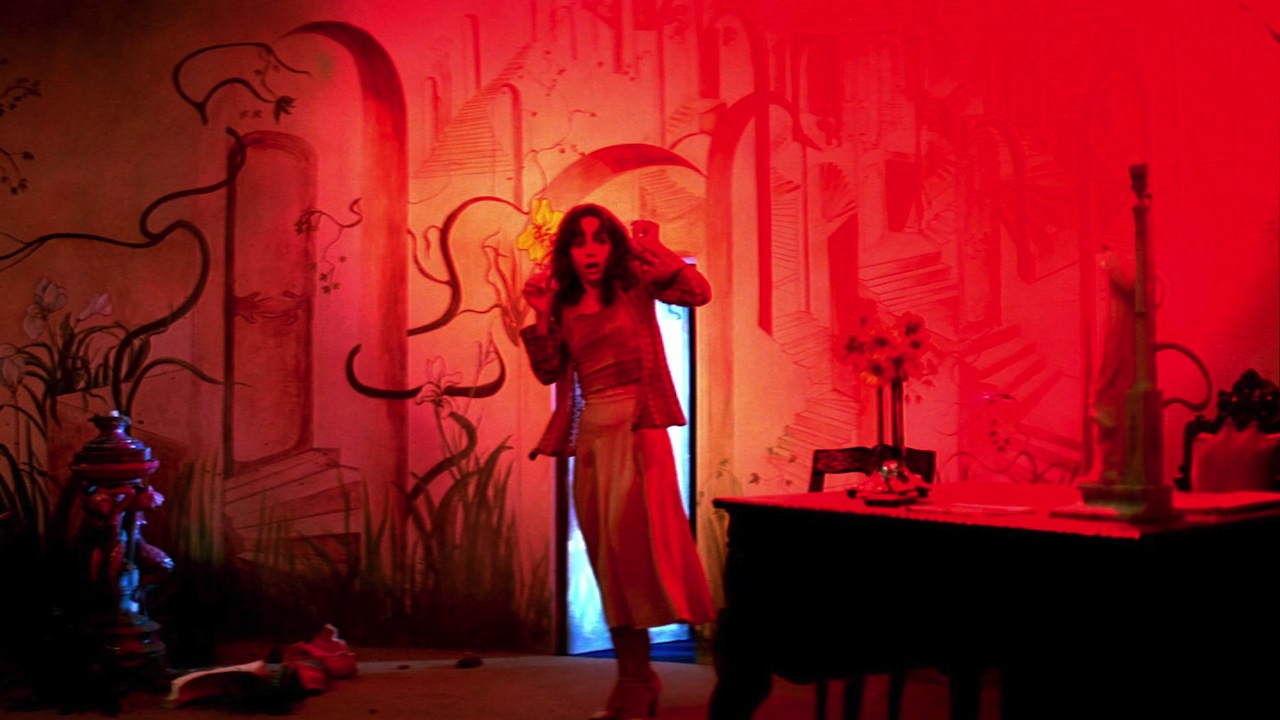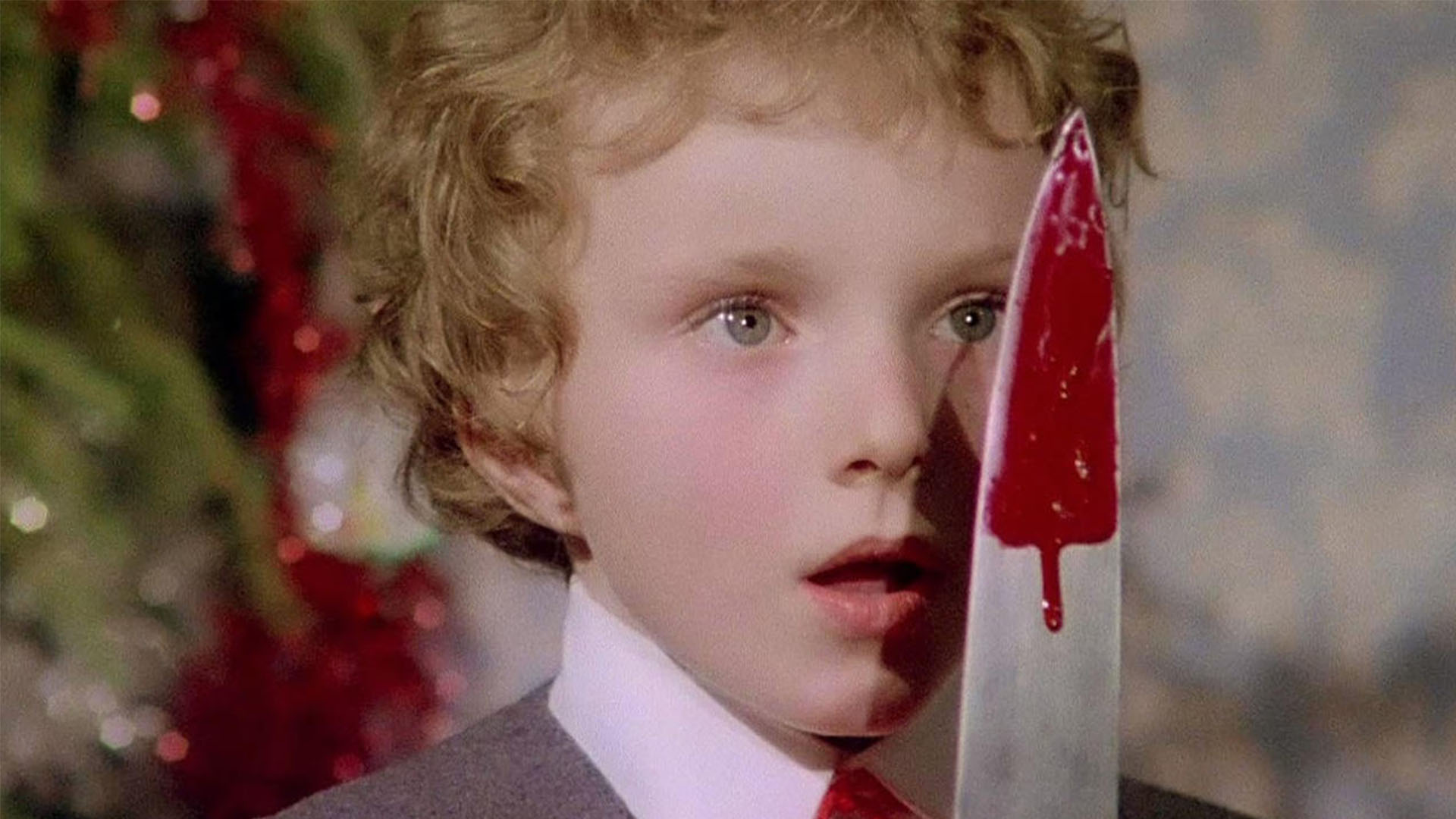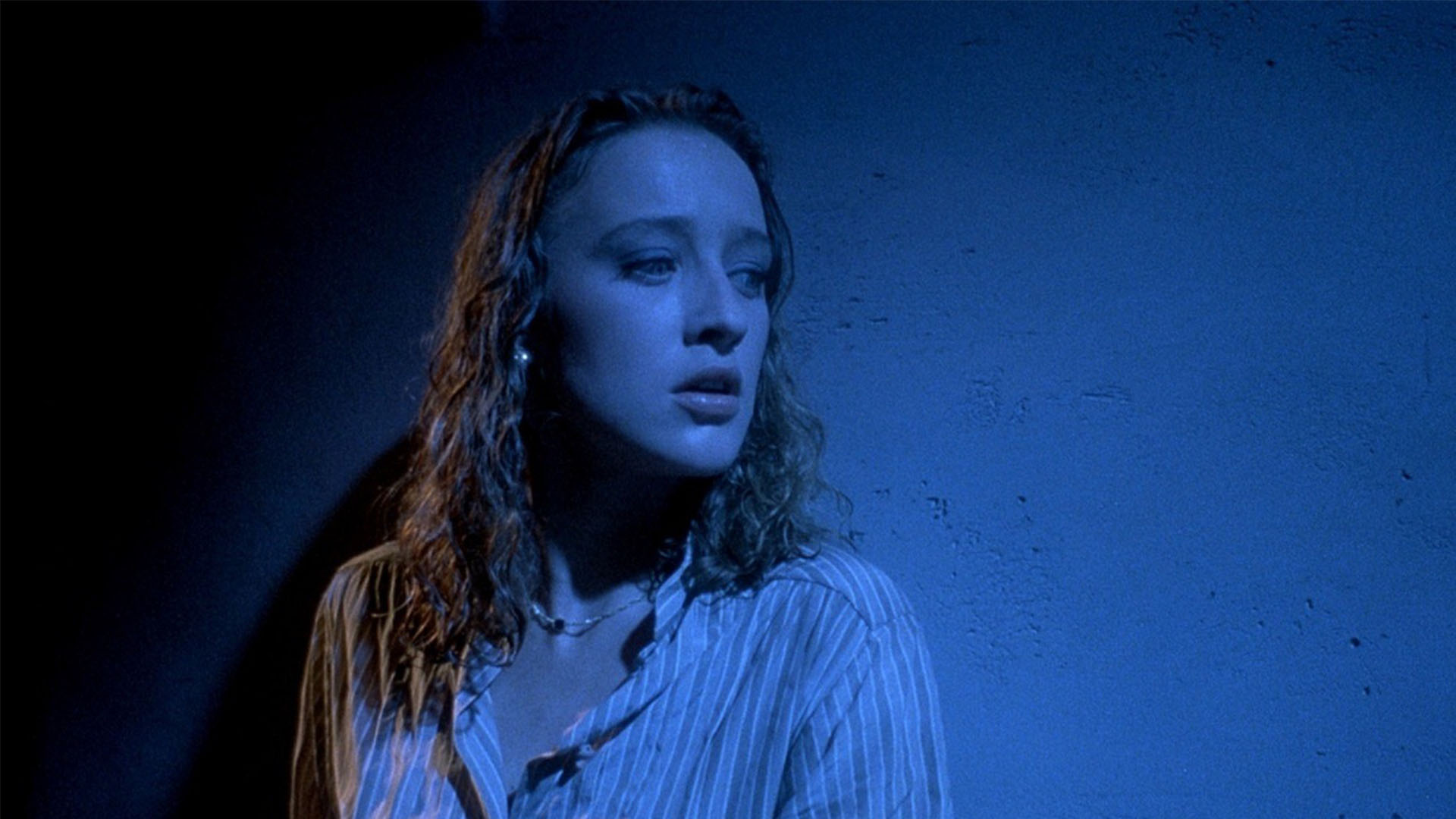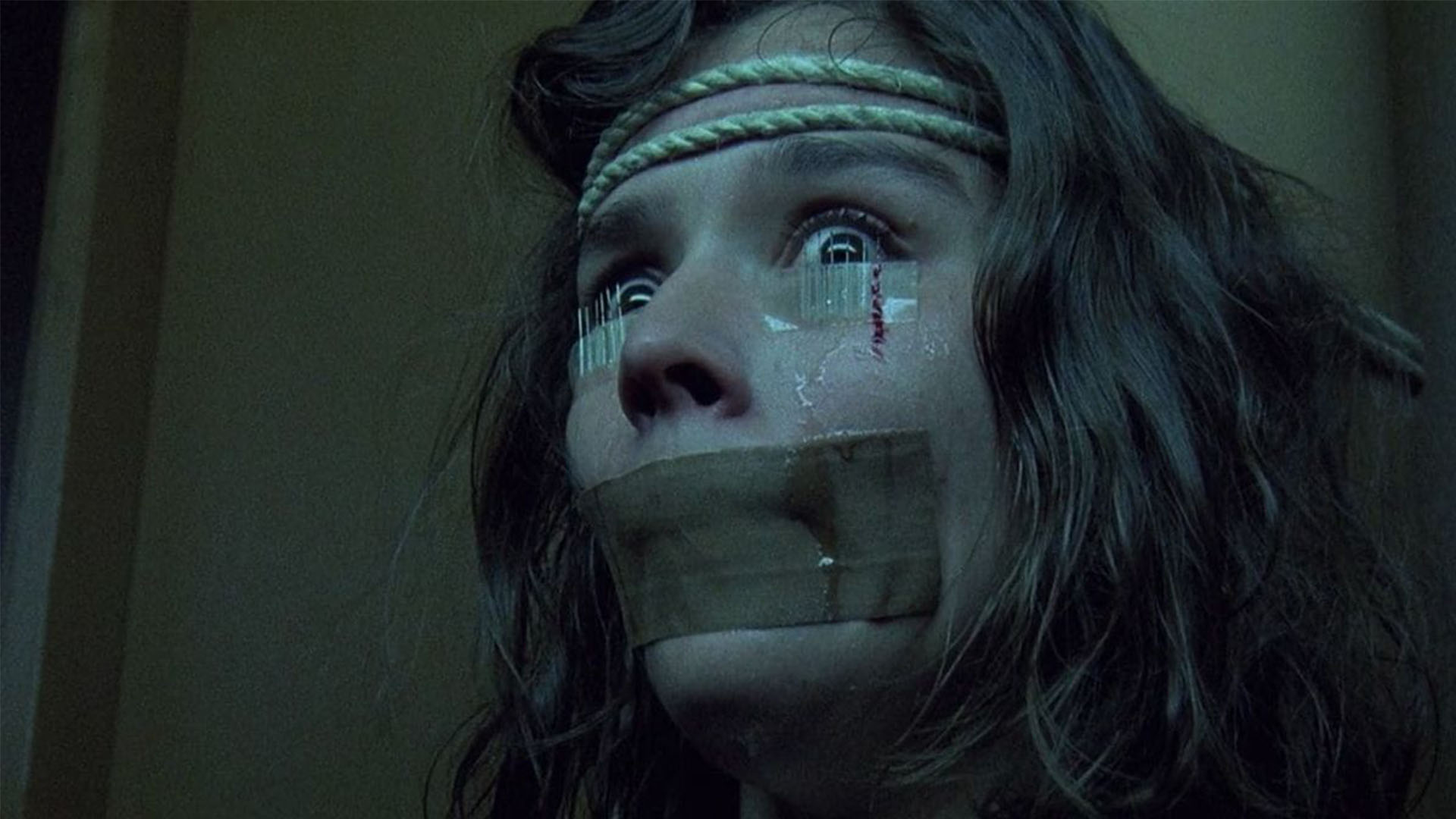Dario Argento: In conversation with the horror master
The legendary director discusses seven of his magnificent movies

This feature first appeared in the May 2023 issue of Total Film magazine. You can purchase a hard copy here.
Exploding onto the scene in the 1970s with a series of grisly murder mysteries punctuated by killer set-pieces, Dario Argento then made Suspiria, a supreme supernatural suspense thriller that is now regarded as one of the best horror movies ever made.
The Italian master talks Total Film through seven of his most magnificent movies. Be afraid, very afraid...
Suspiria (1977)

"After Deep Red [1975, marking the fourth giallo movie Argento had made in five years, starting with his debut The Bird with the Crystal Plumage], I really wanted to change something. I wanted to give a twist to my storytelling. So I found myself looking at the horror movies that I used to watch when I was in high school in Paris and I used to go to the Cinémathèque Française to see all these antique horror movies with the display of shadows and lights. I really wanted that to be reflected in Suspiria. I really wanted the atmosphere, the sorcery and the witches to be reflected in this movie, which I wanted to be completely different from the other ones, but still with a Dario Argento feeling. I wanted colours, gore and flamboyance – a magical acid trip. I love things on the border of reality and fantasy – the supernatural. Witches were something special. As a child, I would have liked, maybe one time, to meet a witch. I used to think my headmistress was a witch. It didn’t scare me. Witches are interesting…
"The opening set-piece [Jessica Harper’s Suzy Bannion takes a hellish taxi ride through a rain-lashed forest to arrive at Freiburg’s ballet academy just as an elaborate double murder takes place] was not particularly hard for me to shoot, because I knew I wanted to shoot in the German Black Forest. So I went scouting for locations there. I was looking for the little villages, the little houses. So the set was there. I mean, I didn’t have to do anything special to the set because it was naturally there. Suspiria was successful because it was a fairy tale reinvented. And inside this fairy tale are all the elements of the subconscious, of psychoanalysis and of sex.’
The Bird With The Crystal Plumage (1970)

"I think my debut looked so fully formed because, before that, I was a cinema critic. I wrote about and watched tons of movies, and I absorbed as much as I could because cinema’s always been my passion. So when I was on set, it was very easy for me. I knew exactly what to do because I’d taken inside me all the experiences of watching great movies. I worked with great professionals, including the cinematographer Vittorio Storaro [The Conformist, Apocalypse Now].
"I did not expect the film to be so well-received because in Italy it started quite low. Then it was a huge success in France, in England and in the United States. It took the people to go and see the movie for me to understand that I had made something special. Not a usual thriller; it was really a personal vision of a thriller, a vision by Dario Argento. My own vision of the giallo was totally instinctive. There was nothing planned, no storyboards. It was easy for me because it was natural. It came out of my inspiration and imagination. My vision of the killer [which is repeated throughout Argento’s movies] I took from the American movies I used to watch and love. I wanted to pay homage to those [film noir] movies by using the same fundamental elements – the dark gloves, the coat and the hat.
Bringing all the latest movie news, features, and reviews to your inbox
"Critics have said I don’t like women, which is completely false, of course. My mother [Elda Luxardo] was a great photographer and she specialised in feminine portraits – common people, but also great actresses like Sophia Loren, like Gina Lollobrigida, like Claudia Cardinale. So I was, of course, surrounded by the elegance and femininity of these women. I adored to work with women. And I have to say thank you to my mother, because in my movies I took a lot of the lessons: how to light a space; how to make any woman beautiful; how to make the expression of her eyes…"
Deep Red (1975)

"The killer in this movie was traumatised by an event he witnessed as a child. I totally believe that you can have a great impression when you’re a kid – you keep it for your entire life. I recall that my father and mother took me when I was four years old to see Shakespeare’s Hamlet. I was so shocked by the scene where the ghost appears that they had to take me out of the theatre. I could not remove this from my head.
"This was my first collaboration with [Italian prog-rock band] Goblin [who famously scored Suspiria, and also Tenebrae and Phenomena]. It was pure fortune. I was looking for other bands like Deep Purple, but they were all busy. I wanted to find something new and I met these four guys who’d just come out of the conservatory of music. They were very fresh and they had ideas. We started a very intimate collaboration. I used to shoot in the day and they used to come to my home in the afternoon or the evening. We would discuss scenes and the music score. It was a total exchange of feeling towards AL AMY, GET T Y the music and we started a collaboration."
Inferno (1980)

"I was studying symbolism, I was studying mystery drawings, mystery paintings, I was studying riddles. That’s why the movie is full of riddles. I remember that I was showing the movie at 20th Century Fox with Sherry Lansing, who was the CEO at the time. She was speechless. At the end of the movie, she asked me, “Why did you put all those riddles in the movie and then you don’t give any solution. What do you want?” And I said, “I don’t want to give any solution. I want the audience and public to think along with me. I want to take them on a trip with me.”
"The underwater sequence near the start of the film [an iconic set-piece in which a character drops her keys into a submerged ballroom and dives down to fetch them, only for a rotting body to float into view] was difficult to shoot. To cast the actor, I went to Los Angeles and I did interviews with actresses. The first question was: “Are you able to swim? Are you able to dive?” Ninety per cent of them were “So-so” until an actress came who was a US swim champion [Irene Miracle]. She could also dive. She was mesmerising and she was acting under the water very naturally. The pool was inside a studio. I’m very, very happy. It was an incredibly difficult situation, so I’m incredibly grateful for all the hard work that she did to make the scene possible.
"I consider Inferno to be one of my best movies."
Tenebrae (1982)

"It was a very difficult movie to shoot because I didn’t want to give any colour. There are no blues, no reds. The palette I used is mainly beige. Why? I wanted this suspended atmosphere and I used a natural location called EUR, which is an area of Rome. I’d shoot there in the morning light and in the night light, just to get inspiration from great symbolistic painters like [Giorgio de] Chirico, who sat in the same place. His paintings have a strange, deformed reality, which is the same impression I wanted my movie to look like. I wanted Tenebrae to have this metaphysical balance between reality and a dreamy horror movie. I wanted to put the movie “in between”. I was aware of the movie being banned in the UK [it was one of the 39 ‘Video Nasties’ that were successfully prosecuted under the Obscene Publications Act]. I didn’t understand why, because when I was in London I would see the movie theatre packed with people. I was sad at the censorship. Nowadays, I can’t imagine what disturbed them so much, to ban part of my movie."
Phenomena (1985)
"What inspired me, what gave me a glimpse for this story, was a radio news story in which they said that, in Germany, there was a murderer that was discovered thanks to the help of insects [their hatching cycles within decomposing bodies enabled a time frame to be applied]. So I worked with an entomologist in order to make the movie as real as possible. We didn’t train the insects at all [for scenes in which the girl with powers, played by Jennifer Connelly, communicates with them]. They just did it and I was very quick to take the shot when they were doing what I wanted. We did train the chimpanzee [who acts as nurse and helper to Donald Pleasence’s insect expert]. The chimpanzee was very intelligent. We’d say, “You have to do this, this, and that.” And he would nod his head. You’d get the impression that he really understood. It’s really incredible: chimpanzees are sometimes better than humans."
Opera (1987)

"I came up with the idea of the pins keeping the eyes open as I didn’t like it when people closed their eyes at the scary bits in my films! It’s true. Opera has many visual flourishes, like the crow’s-eye view as it swoops around the opera house, and the bullet being fired through a spy-hole in the door. I really love the movement of the camera. I learned this from the set of Sergio Leone, when I was a writer on Once upon a Time in the West [1968]. I was looking at how he moved the camera. I realised that this was the most important part of the movie for me, to give this kind of aspect. In Tenebrae, there is an incredible scene where the camera turns all around the house [including up and over the roof]. I have fun and I think it’s really the movement of the camera that makes the difference in my movies. I feel very free to move it wherever I want to move it and to give the right impression to the public."
For more spooky shenanigans, check out out list of the best horror movies of all time.
Jamie Graham is the Editor-at-Large of Total Film magazine. You'll likely find them around these parts reviewing the biggest films on the planet and speaking to some of the biggest stars in the business – that's just what Jamie does. Jamie has also written for outlets like SFX and the Sunday Times Culture, and appeared on podcasts exploring the wondrous worlds of occult and horror.


